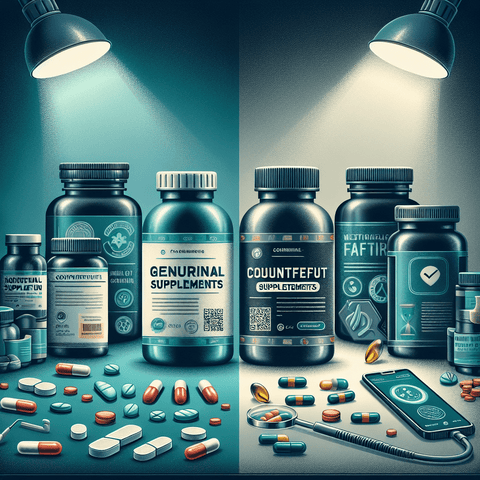Introduzione: L'ascesa degli integratori masticabili nel mondo della salute nutrizionale
Negli ultimi anni, gli integratori masticabili hanno fatto il loro ingresso come una popolare alternativa alle tradizionali pillole e capsule. Colorati, gustosi e spesso simili a caramelle, questi nutraceutici attraggono persone di tutte le età. Ma il loro aspetto appetitoso solleva una domanda importante: gli integratori masticabili sono efficaci, o sono solo una tendenza ricoperta di zucchero? I consumatori attenti alla salute stanno dando priorità alla convenienza più che mai. Di conseguenza, l'industria degli integratori si è evoluta per soddisfare queste esigenze offrendo formati più user-friendly, tra cui masticabili, gomme, compresse effervescenti e pastiglie masticabili. Che sia a causa della difficoltà di deglutire pillole o di una preferenza per opzioni dal sapore migliore, molti utenti stanno facendo il passaggio. Rispetto alle forme tradizionali come capsule, compresse o polveri, i masticabili offrono un mix unico di gusto e facilità d'uso. Alcuni sostengono che i masticabili offrano anche una migliore assorbimento iniziando la digestione in bocca. Tuttavia, queste affermazioni meritano un esame scientifico, soprattutto quando i consumatori affidano questi prodotti alla loro nutrizione quotidiana. L'obiettivo di questa guida approfondita è esaminare gli integratori masticabili da ogni angolazione. Esploreremo i loro ingredienti, la biodisponibilità, l'idoneità per adulti rispetto ai bambini e i potenziali svantaggi. Utilizzeremo prove basate sulla scienza e linee guida professionali sulla salute per determinare se questi integratori meritino un posto nella vostra routine di benessere.Vitamine Gommose: Trattamenti alla Moda o Strumenti Nutrizionali Legittimi?
Le vitamine gommose sono spesso l'immagine rappresentativa degli integratori masticabili. Inizialmente rese popolari come soluzione amichevole per i bambini contro le pillole insipide e difficili da deglutire, le gommose sono rapidamente cresciute in popolarità tra gli adulti che cercavano opzioni gustose e convenienti di integrazione. Le gommose contengono tipicamente micronutrienti comuni come la vitamina C, la vitamina D, i complessi vitaminici B e minerali come lo zinco o il calcio. L'inclusione di agenti aromatizzanti, pectina o gelatina (per la consistenza) e coloranti imita un'esperienza simile a quella delle caramelle. Tuttavia, questa natura simile a un trattamento può sia aiutare che ostacolare la loro efficacia. Uno dei principali vantaggi delle gommose è il miglioramento dell'aderenza. Studi hanno mostrato tassi di aderenza più alti per le gommose rispetto a compresse o capsule, specialmente tra gli utenti con affaticamento da pillole. Questa coerenza contribuisce a un apporto nutrizionale più affidabile, particolarmente utile per regimi a lungo termine. Tuttavia, ci sono limitazioni notevoli. A causa del gusto e dei vincoli di dimensione, le gommose spesso contengono dosi inferiori di nutrienti rispetto ai loro equivalenti tradizionali. Alcune vitamine - in particolare quelle liposolubili come D, E e K - possono apparire in quantità troppo basse per soddisfare i livelli di assunzione giornalieri raccomandati per individui carenti. Inoltre, alcuni minerali voluminosi come magnesio e calcio pongono sfide di formulazione a causa del loro sgradevole gusto e del volume richiesto. La valutazione scientifica della stabilità dei nutrienti ha anche rivelato preoccupazioni. Un rapporto del 2017 di Consumer Lab ha scoperto che alcuni prodotti non soddisfacevano le loro dichiarazioni di etichetta a causa della scarsa stabilità degli ingredienti attivi. Calore, umidità ed esposizione alla luce possono degradare vitamine sensibili, specialmente in matrici di gelatina o pectina. Inoltre, a causa delle restrizioni sugli ingredienti, le gommose possono omettere nutrienti vitali come fibre, ferro e alcuni flavonoidi. Il contenuto di zucchero è un altro problema comune: mentre esistono varietà senza zucchero, molte gommose contengono fino a 3g di zucchero aggiunto per porzione. Per confronto - e preoccupazione - questo è quasi tanto quanto in una caramella di dimensioni simili. In definitiva, mentre le gommose possono far parte di una strategia di integrazione equilibrata, specialmente per chi non tollera le capsule, è fondamentale scegliere prodotti supportati dalla scienza con etichettatura trasparente e dosaggi nutrizionali adeguati. Alcune opzioni disponibili tramite la categoria vitamina C di Topvitamine offrono versioni masticabili con supporto antiossidante e contenuto di zucchero ridotto per utenti attenti alla salute.Vitamine Masticabili per Adulti: Opzione Intelligente o Pura Furbizia?
Una volta relegati al reparto di cura della salute per bambini, le vitamine masticabili per adulti costituiscono ora un segmento di mercato in rapida crescita. Disponibili in diverse forme - dalle multivitamine quotidiane a nutrienti mirati come la vitamina D3, B12 e omega-3 - questi integratori attraggono un vasto demografico. Perché improvviso boom tra gli adulti? Deglutire pillole, specialmente grandi multivitaminici o compresse minerali, può essere difficile. Studi suggeriscono che quasi il 40% degli adulti sperimenta qualche forma di difficoltà nel deglutire pillole, rendendo i masticabili un'alternativa pratica. Inoltre, i masticabili dal sapore gradevole eliminano il comune reclamo del "rigurgito vitaminico" - particolarmente associato agli integratori di olio di pesce o ferro. Le formulazioni differiscono significativamente tra masticabili per adulti e quelli per bambini. Le formulazioni per adulti presentano di solito concentrazioni più elevate di nutrienti per soddisfare aumentate esigenze fisiologiche. Ad esempio, i dosaggi di B12 masticabili per adulti possono variare da 500 mcg a 1000 mcg - molto oltre ciò che è tipicamente incluso per i bambini. Gli adulti possono anche richiedere ulteriore vitamina K2 e omega-3 DHA per il supporto immunitario e cardiovascolare, come trovato in integratori di DHA e EPA omega-3 di Topvitamine. I masticabili per adulti spesso evitano coloranti artificiali o eccesso di zucchero, anche se i consumatori devono esaminare attentamente le etichette per dolcificanti come sciroppo di mais o varianti ad alto fruttosio. È essenziale valutare l'elenco degli ingredienti per additivi o agenti aromatizzanti. Dolcificanti naturali come stevia o frutto di monaco possono essere preferibili, e lo xilitolo (quando usato) può offrire benefici per la salute orale senza influenzare i livelli glicemici. Tuttavia, non tutto è positivo. I masticabili possono soffrire di distribuzione disuguale di nutrienti, specialmente nei morbidi masticabili o nei prodotti a base di pectina. Questa incoerenza può diventare problematica nei prodotti destinati a dosaggi mirati, come la vitamina D3 o il magnesio. Nutrienti utili da cercare nelle formulazioni per adulti includono la vitamina B12 (specialmente per vegetariani), la vitamina D3 (cruciale per la salute delle ossa e l'immunità), la vitamina K2 (per la coagulazione del sangue e il trasporto del calcio) e gli acidi grassi omega-3. Prodotti trovati in la gamma di vitamina D di Topvitamine offrono diverse opzioni masticabili progettate per una biodisponibilità ottimale e profili puliti. Per risultati ottimali, gli adulti sono incoraggiati a usare integratori masticabili strategicamente - colmando le lacune dietetiche piuttosto che come sostituti della nutrizione a base di alimenti integrali. Scegli sempre prodotti da produttori affidabili con test di terze parti ed evita quelli con etichettature vaghe o affermazioni salutistiche non verificate.Absorptione di Integratori: I Masticabili Funzionano Davvero Meglio?
Non basta che un integratore contenga semplicemente i nutrienti giusti. La biodisponibilità - quanto bene una sostanza viene assorbita e utilizzata dal corpo - è ugualmente, se non più, essenziale. Questo solleva una domanda critica: i masticabili offrono vantaggi rispetto alle capsule, compresse o polveri quando si tratta di assorbimento? Masticare inizia il processo di digestione attraverso la rottura meccanica e l'azione enzimatica della saliva - in particolare l'enzima amilasi, che inizia la digestione dei carboidrati. Questo processo di predigestione può facilitare una rottura e assorbimento più rapido nello stomaco e nell'intestino tenue. Ricerche suggeriscono che ci possono essere modesti vantaggi per le vitamine idrosolubili (come il complesso B e la vitamina C) consumate in forme masticabili o liquide. Uno studio pubblicato sul Journal of Clinical Pharmacology ha dimostrato che la vitamina C masticabile ha raggiunto la concentrazione plasmatica massima più rapidamente rispetto alla forma di compressa. Questi risultati supportano la teoria che i masticabili possano offrire una consegna più rapida di nutrienti, specialmente in individui con digestione compromessa. Per i nutrienti liposolubili come la vitamina D e K, che richiedono bile e grassi dietetici per l'assorbimento, le forme masticabili devono essere correttamente emulsionate per essere davvero benefiche. Alcuni prodotti masticabili - e quelli disponibili tramite la linea di vitamina K di Topvitamine - includono sistemi di consegna efficaci che supportano questa sinergia, aumentando l'efficacia. Individui con determinate condizioni di salute possono trarre maggior beneficio dai masticabili. Questi includono anziani con diminuita acidità gastrica, pazienti con disturbi gastrointestinali come la malattia di Crohn o la sindrome dell'intestino irritabile, e individui post-chirurgia bariatrica. Per tali popolazioni, aggirare compresse poco sciolte riduce il rischio di malassorbimento. I masticabili possono anche promuovere una migliore aderenza grazie al loro migliorato palatabilità. Tuttavia, ci sono avvertenze. Non tutti i masticabili sono creati uguali. La matrice utilizzata (gelatina vs. pectina), la presenza di leganti o riempitivi e la formulazione complessiva influenzano i tassi di rilascio dei nutrienti. Alcuni masticabili potrebbero non disintegrarsi completamente, portando a un aiuto inferiore al previsto nella biodisponibilità dei nutrienti. Il consenso scientifico suggerisce che mentre i masticabili possono offrire piccoli vantaggi di assorbimento in condizioni ideali, la qualità complessiva, la forma e le pratiche di assunzione corrette (ad esempio, consumare con cibo) hanno più influenza sulla biodisponibilità rispetto alla sola forma di dosaggio.Integratori Aromatizzati: Dolcificare l'Affare o Compromettere la Salute?
Il sapore è un elemento rivoluzionario nel mondo degli integratori. Il gusto influisce direttamente sulla compliance dell'utente, specialmente quando si tratta di bambini o adulti con sensibilità sensoriali. Ma l'arricchimento del sapore comporta un costo nascosto? Sapori naturali come estratti di frutta, vaniglia o menta migliorano la palatabilità senza compromettere il profilo di salute dell'integratore. Più preoccupanti, tuttavia, sono i sapori artificiali, i coloranti e i dolcificanti, che possono contrastare gli obiettivi di benessere di un prodotto. I dolcificanti sono particolarmente dibattuti. Sebbene lo zucchero migliori il gusto e la consistenza dei masticabili, alte quantità presentano ovvi svantaggi. Alcuni prodotti contengono fino a 8 grammi di zucchero per porzione - quasi un terzo del limite giornaliero raccomandato. L'uso a lungo termine può contribuire a picchi di zucchero nel sangue o ostacolare la gestione del peso. Alternative a basso contenuto di zucchero come gli zuccheri alcolici (ad esempio, xilitolo, eritritolo) o la stevia offrono opzioni con minori preoccupazioni metaboliche. Meritano attenzione anche i coloranti. Coloranti artificiali, come il Rosso #40 o il Giallo #5, sono ancora consentiti in certi mercati ma hanno subito critiche a causa di potenziali effetti collaterali correlati al comportamento in individui sensibili, specialmente nei bambini. Marchi affidabili tendono a evitare additivi sintetici a favore di tonalità vegetali come barbabietola o curcuma per la colorazione. Oltre all'estetica e al gusto, i sapori possono talvolta svolgere ruoli funzionali. Ad esempio, la menta piperita o lo zenzero nei masticabili possono alleviare il disagio digestivo. Sapori agrumati possono abbinarsi sinergicamente con antiossidanti come la vitamina C. In questo senso, il sapore non è sempre superficiale - può essere strategico, migliorando sia l'usabilità che l'efficacia. I consumatori che cercano masticabili aromatizzati di alta qualità dovrebbero verificare gli elenchi degli ingredienti e dare priorità ai prodotti con additivi minimi non necessari. La trasparenza nell'origine del sapore (ad esempio, “estratto naturale di arancia” vs. “aromatizzante”) aiuta anche i consumatori a fare scelte informate. Una vasta gamma di opzioni aromatizzate ma consapevoli della salute sono disponibili in la collezione di magnesio di Topvitamine, molte delle quali contengono sapori naturali e enfatizzano l'integrità degli ingredienti.Multivitaminici Masticabili: Soluzioni All-in-One o Comodità Sopravvalutata?
I multivitaminici sono il pilastro delle routine di supplementazione per milioni di persone. Ma i multivitaminici masticabili - impacchettando numerosi nutrienti in una singola dose gustosa - possono essere una spada a doppio taglio. Un vero multivitaminico contiene una combinazione di vitamine e minerali essenziali per colmare le lacune di micronutrienti. In forma masticabile, i produttori devono bilanciare gusto, stabilità, biodisponibilità e dimensione fisica. Queste limitazioni portano spesso a riduzioni o esclusioni di determinati nutrienti - comunemente ferro, magnesio o calcio - a causa di vincoli di gusto o dimensione. Tuttavia, esistono opzioni di alta qualità che soddisfano esigenze specifiche. Ad esempio, i vegetariani possono beneficiare di multi masticabili con B12 e ferro (se presente), mentre i senior possono cercare miscele ricche di vitamina D3, vitamina K2 e antiossidanti. I professionisti impegnati possono preferire all-in-one convenienti con un profilo ampio ma bilanciato. Una considerazione importante è se la formula è personalizzata o generica. I masticabili universali potrebbero non soddisfare le esigenze individuali. La personalizzazione, sebbene meno comune nei masticabili, sta crescendo con marchi che offrono miscele mirate a nutrienti - ad esempio, supporto immunitario con vitamina C e zinco o salute ossea con magnesio e D3. Troverete opzioni su misura e scientificamente create in la vitamina C e le collezioni di vitamina D di Topvitamine. In definitiva, i multivitaminici masticabili offrono un valore reale quando confezionati responsabilmente: approvvigionamento pulito, zucchero minimo, copertura a spettro completo e etichettatura trasparente.Conclusione: Dovresti Assumere Integratori Masticabili?
Gli integratori masticabili sono cresciuti ben oltre il ruolo di trattamenti simili a caramelle. Rappresentano una via legittima e spesso altamente efficace per migliorare l'assunzione di nutrienti. Che tu sia un professionista impegnato, un anziano con affaticamento da pillole o un genitore che garantisce una dieta equilibrata per tuo figlio, i masticabili offrono chiari benefici. Tuttavia, potenziali svantaggi - come dosaggi più bassi di nutrienti, additivi discutibili e degradazione legata alla scadenza - significano che non sono adatti a tutti. La selezione del prodotto è critica, e gli utenti devono guardare oltre il marketing colorato alla realtà scientificamente supportata del contenuto e dell'assorbimento dei nutrienti. Scegliere il masticabile giusto dipende dalle esigenze personali: restrizioni dietetiche, condizioni mediche, fattori di stile di vita ed età. Individui con sfide gastrointestinali o che faticano a deglutire pillole possono trarre grande beneficio da masticabili di alta qualità. Consulta sempre un operatore sanitario per identificare le tue specifiche necessità nutrizionali. Per i consumatori alla ricerca di masticabili affidabili, ricchi di nutrienti e con etichette pulite, TopVitamine.com offre una selezione curata di opzioni supportate dalla scienza personalizzate per vari obiettivi di salute.Sezione Domande e Risposte
Domanda: Gli integratori masticabili sono efficaci come le pillole normali?Risposta: I masticabili possono essere altrettanto efficaci se formulati correttamente. Il loro assorbimento può persino essere migliorato attraverso la predigestione in bocca. Detto questo, limitazioni di dosaggio e problemi di stabilità degli ingredienti possono influenzare l'efficacia. Domanda: Le vitamine masticabili senza zucchero sono migliori?
Risposta: Le opzioni senza zucchero sono spesso preferibili, specialmente per uso a lungo termine o per utenti con preoccupazioni metaboliche. Cerca prodotti dolcificati con alternative naturali come stevia o xilitolo. Domanda: Chi beneficia maggiormente degli integratori masticabili?
Risposta: Bambini, anziani, persone con condizioni gastrointestinali e coloro che non amano deglutire pillole sono i principali beneficiari. Anche le persone che cercano una supplementazione conveniente possono preferire i masticabili. Domanda: Le vitamine masticabili possono sostituire una dieta sana?
Risposta: No. Gli integratori sono destinati a colmare le lacune nutrizionali - non a sostituire l'assunzione di cibi integrali. Dai sempre priorità a una dieta varia ed equilibrata.



